Do you know about the Lifespan of Jumping Spider? Well here are all the details and information about this fascinating creature!
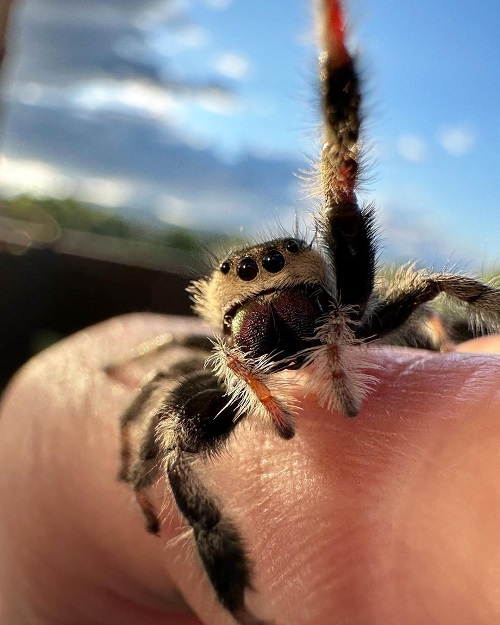
If you don’t have any idea about the Lifespan of Jumping Spider along with the other information, then we are here to help you out! Keep reading!
Read about the Banana Spider Facts here
Jumping Spider Information
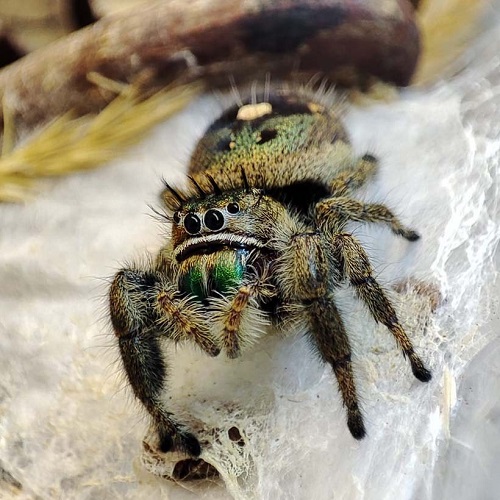
Jumping spiders are fascinating creatures belonging to the family Salticidae, found worldwide except in Antarctica. They have unique features, including excellent vision with eight eyes and a stout body. These agile hunters actively stalk and leap on their prey, covering several times their body length. With over 6,000 identified species, each jumping spider exhibits distinct color patterns and behavior.
They are harmless to humans, and some showcase vibrant colors. Jumping spiders are found in various environments and are known for their courtship dances and silk production. Observing them from a safe distance allows them to continue their important role in controlling insect populations.
Find Leafcutter Bees: Are they Good or Bad here
Lifespan of Jumping Spider
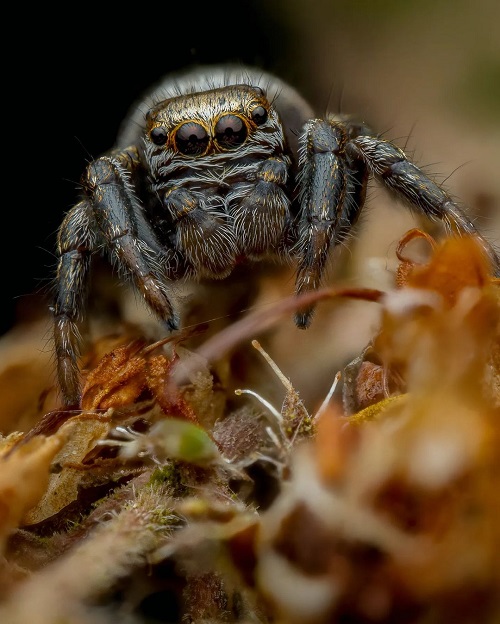
The Lifespan of Jumping Spider can range from 3 months to 3 years. Male jumping spiders usually live for less than a year, while females can live a bit longer. How long they live can also be influenced by where they are located in the country, whether they are kept in captivity or living in the wild, and various other factors.
The oldest recorded jumping spider was a female kept in captivity. On average, jumping spiders live around 6 months to a year, which can vary depending on different factors.
Find Master Gardener’s Tricks to Improve Beneficial Insects in Garden here
Lifecycle of Jumping Spiders
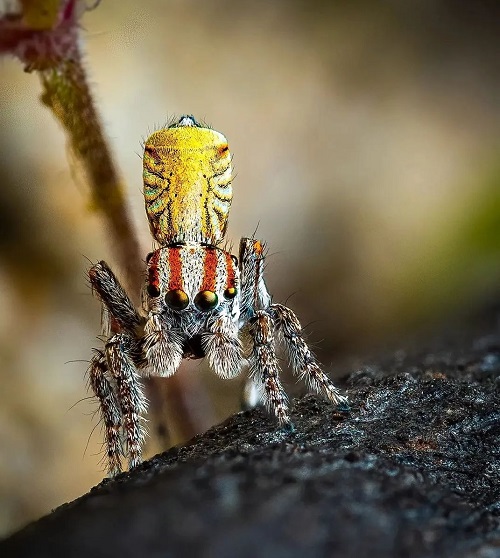
Like many other spiders, the jumping spider goes through three main life stages. Let’s take a look at each stage of the jumping spider’s life below.
1. Egg
The first stage in the life of a jumping spider is the egg stage. After male and female jumping spiders mate, the female spider looks for a safe spot to lay her eggs. She places the eggs inside a special sac, which helps to keep them protected and hidden from predators. Since female jumping spiders can lay many eggs at once, the sac is essential to keep them all together.
Usually, the female lays the eggs in late Winter or early Spring. This timing allows the eggs to hatch after a few weeks when the weather is warmer during Spring.
2. Egg Sac
Female spiders make a protective bag called an egg sac using silk to keep their eggs safe. The sac is designed to keep the eggs safe from other animals and bad weather.
Some spiders carry the sac with them until the eggs are ready to hatch, while others bury it in a safe place and leave it there until the right time. In some places, spider eggs stay in the sac during winter and hatch in the spring. After a few weeks, the eggs start to hatch.
3. Spiderlings
After hatching from their eggs, the spiders enter their next stage, called “spiderlings.” Spiderlings are baby spiders that have just come out of the egg sac and are usually smaller than a tic tac.
Some spiderlings can walk out of the sac on their own, while others use their silk to create a balloon-like structure that carries them away with the wind to their new home. This process is called “ballooning.”
During the spiderling phase, they grow by shedding their outer skin, a process called molting. They will molt around 5 to 10 times until they become adult spiders with their fully developed exoskeletons.
4. Adult Spider
Once the spiderlings have molted several times and grown their full exoskeletons, they become adult jumping spiders. At this stage, they are ready to reproduce, so they start searching for a mate and a safe spot to lay their eggs. Female jumping spiders generally live longer than males, who often die shortly after mating.
Though female jumping spiders are not highly involved in raising their young, their longer lifespans allow them to assist in the upbringing of their spiderlings.
Read Praying Mantis Egg Sac Information and Details here
Factors that Might Shorten A Jumping Spiders Lifespan?
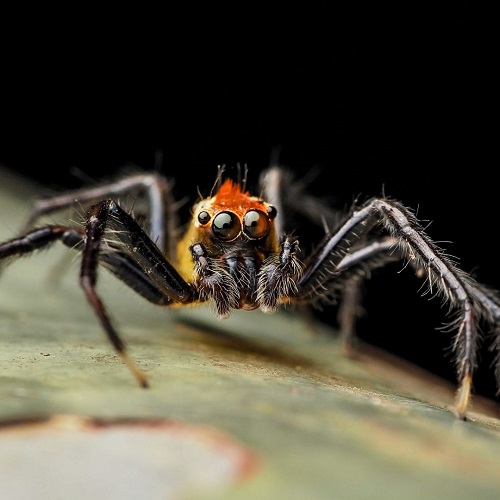
1. Diseases
Jumping spiders can get sick, which can make their lives shorter. There are reports of tiny spider mites spreading diseases to jumping spiders, making them sick and not living as long.
Sometimes, jumping spiders can also get infected with worms, and this can either kill them or make their lives much shorter.
2. Predators
Jumping spiders are good at catching pests, but they also have enemies that like to eat them. Some of these enemies are wasps and hornets, larger spiders, lizards, and geckos.
Sometimes, even birds can be a threat to them. If a jumping spider lives in an area with many of these potential enemies, it’s more likely to be eaten before it can live its full life.
3. Captivity vs. Wild
Jumping spiders that are kept as pets or in captivity, like in a zoo, usually live longer than those in the wild. This is because, in captivity, they don’t have to search for food or water, and they are kept in comfortable environments with the right temperature and conditions.
Also, they don’t have to be afraid of predators, so they can live safer and longer lives.
4. Human Interference
Human activities, like habitat destruction, pesticide use, or unintentional harm, can negatively impact jumping spider populations. This interference can disrupt their natural habitats, limit their food sources, or directly cause harm to the spiders.
5. Lack of Food
Jumping spiders are active hunters and require a steady supply of insects and other small prey for sustenance. If they cannot find enough food in their environment, it can lead to malnutrition and a shortened lifespan.
6. Harsh Weather Conditions
Extreme weather conditions, such as prolonged droughts, floods, or severe cold, can harm jumping spiders. They are small and vulnerable to harsh environmental changes, which may result in decreased survival rates and shorter life.

